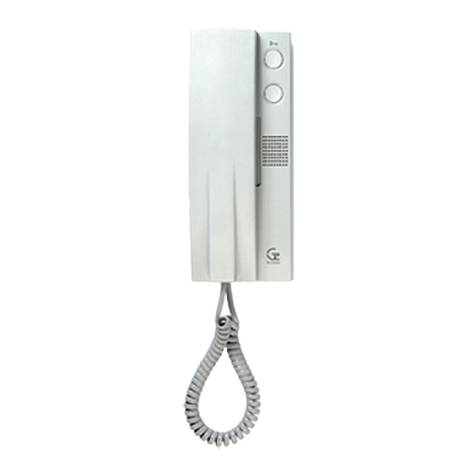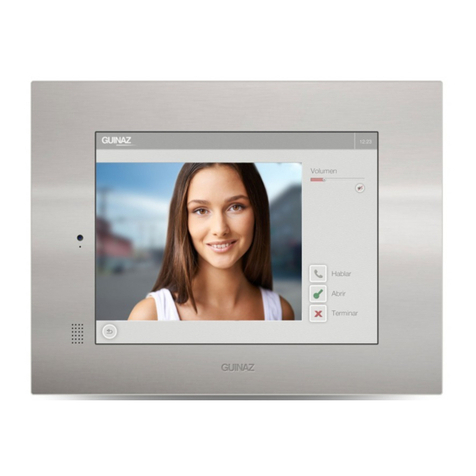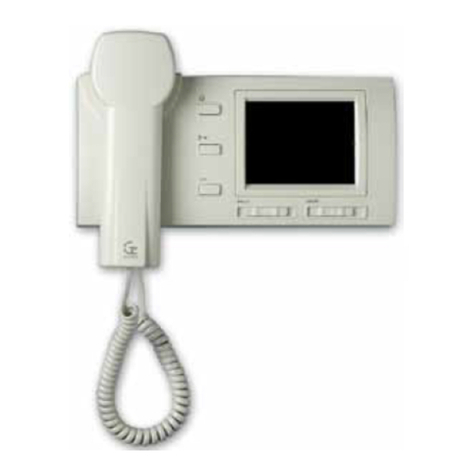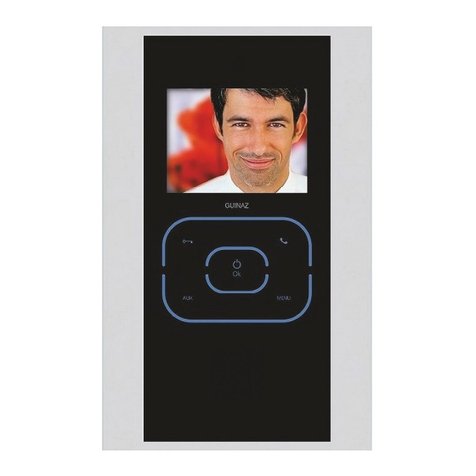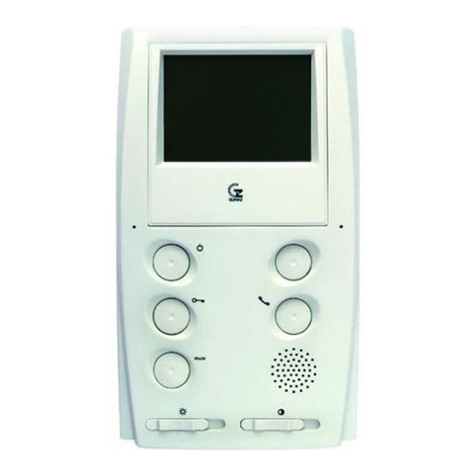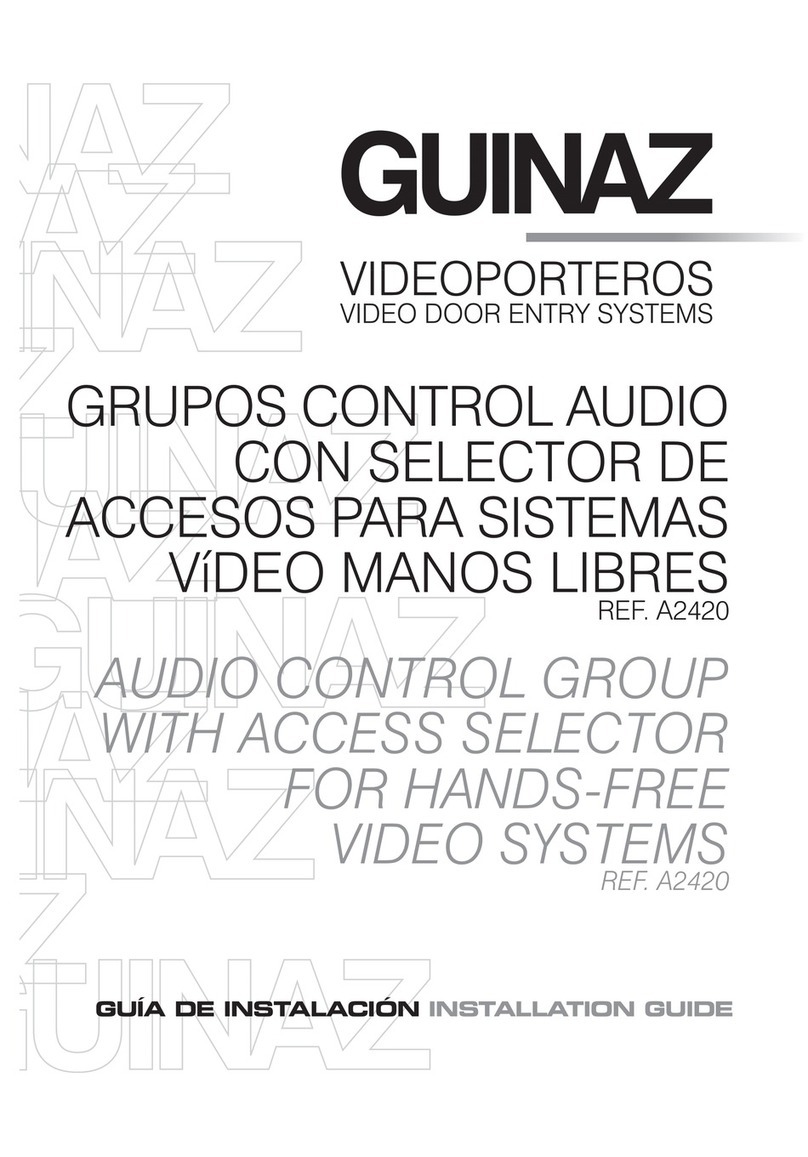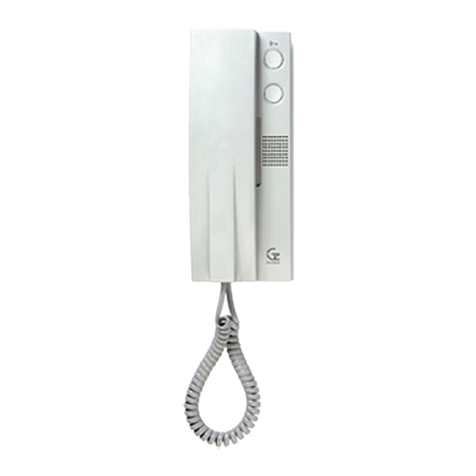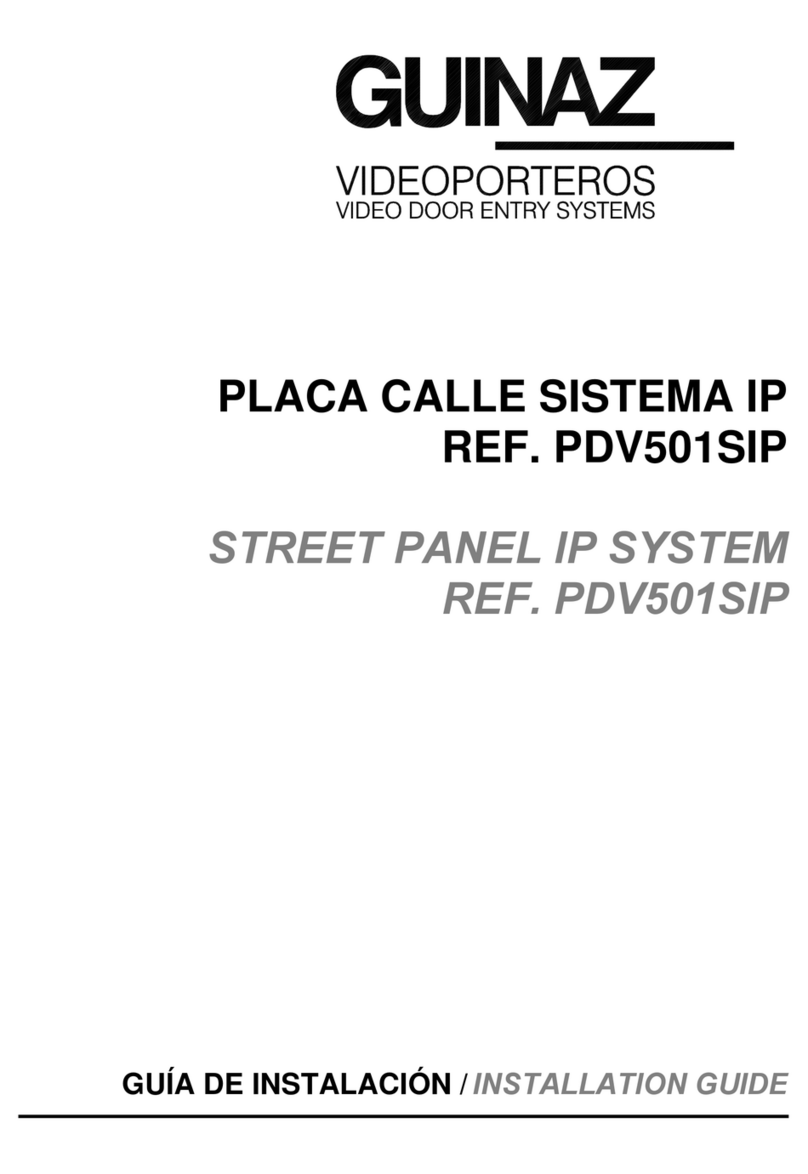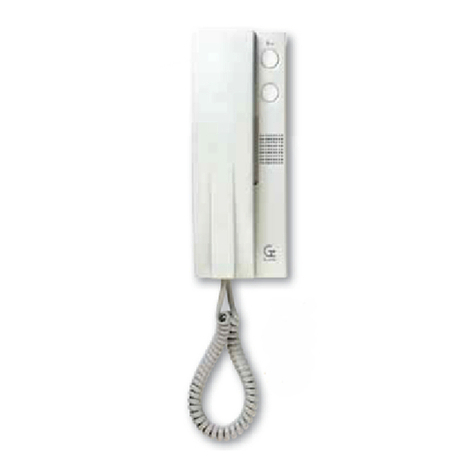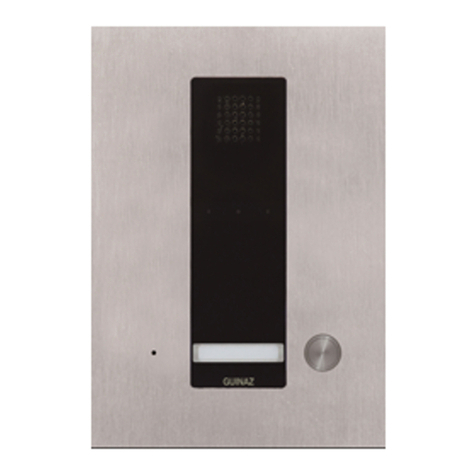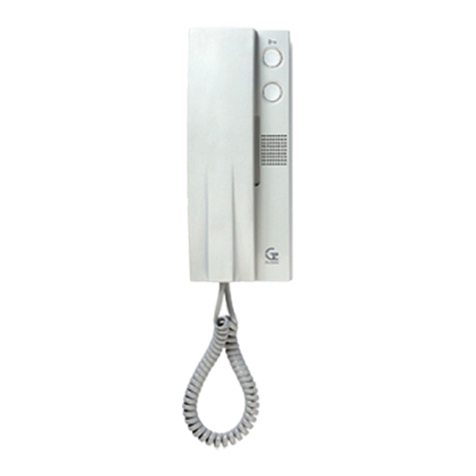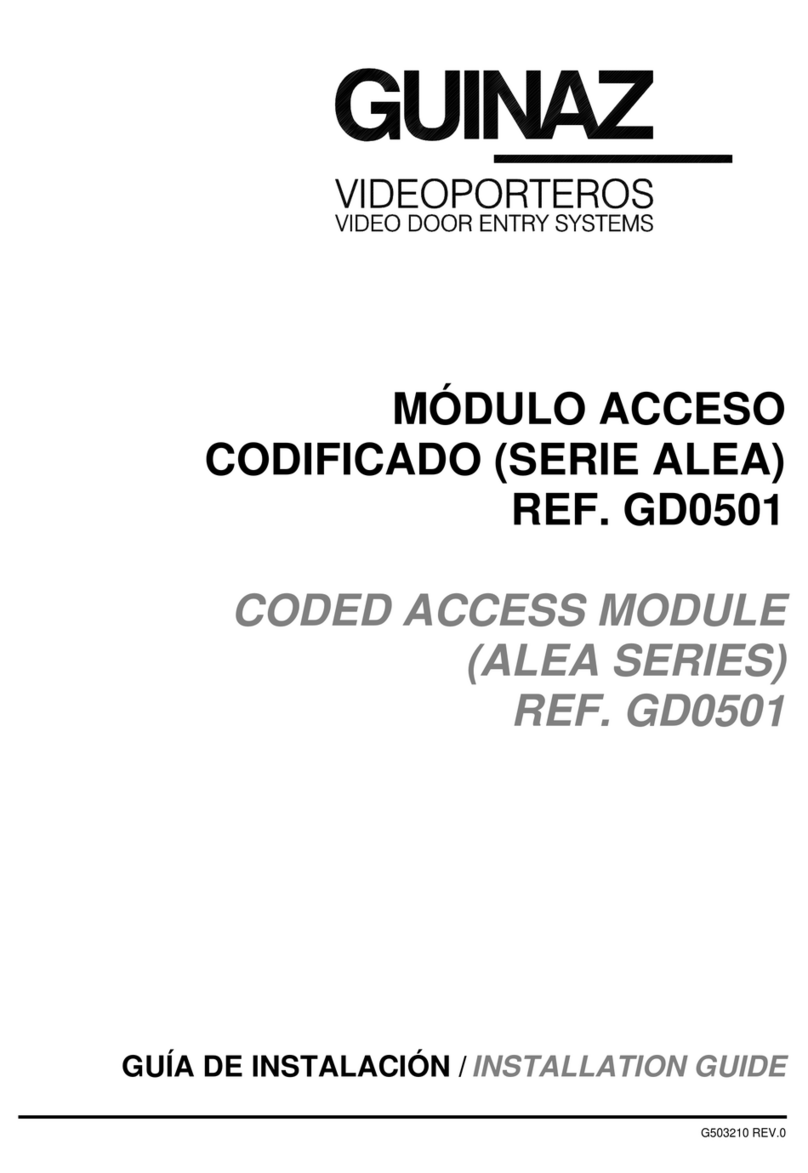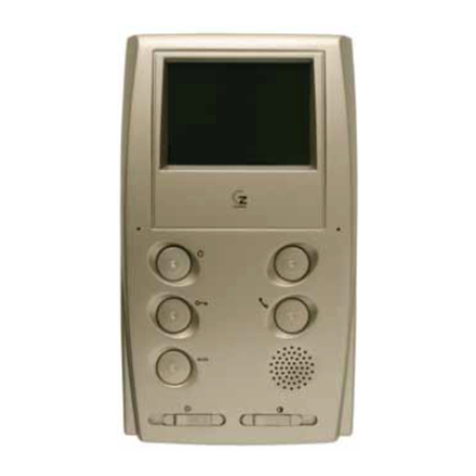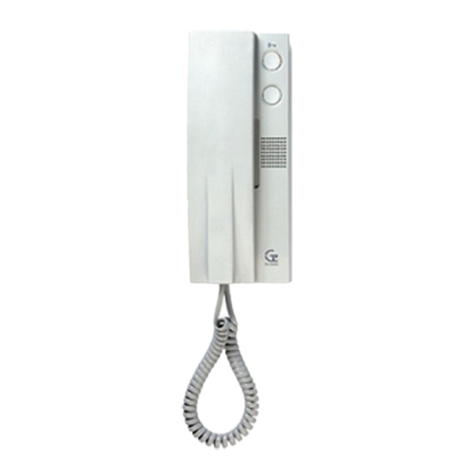
2
1
3
1. DESCRIPCIÓN DE LOS EQUIPOS.
DESCRIPTION OF THE EQUIPMENT.
The digital video entryphone system kits by Guinaz are made up of
a street panel ALEA, colour monitors ref. M3750, a power supply and
a direct current door opener (depending on reference . There are different
digital door entry system kit references according to the number of
dwellings.Check the Guinaz product catalogue to choose the
reference that best adapts to your needs and preferences.
The front of the street panel is a compact panel to which the camera
module, the audio control group and the pushbutton module are
attached.
The power supply has a 90-264V input voltage range, delivering at
output 17V direct current to supply all the rest of the equipment in
the installation.
The audio control group of the street panel allows placing an external
pushbutton to activate the door opener. A direct current door opener
(maximum 12Vdc 400mA) or an alternating current door opener
(maximum 12Vac 1A) can be installed in all the digital video
entryphone kits The way these two kits are connected is indicated
below. In the case of kits including a door opener as standard, these
door openers will always use direct current.
These sets of equipment are for exclusive use in GUINAZ entryphone
installations. They will be installed as specified in this guide while
applying the regulations in force.
Los kits de videoportero digitales de Guinaz constan de una placa
calle serie ALEA, monitores color ref. M3750, fuente de alimentación
y abrepuertas de corriente continua (según referencia). Existen
diferentes referencias de kit de videoportero digital según el número
de viviendas. Consulte el catálogo de productos Guinaz para elegir
la referencia que mejor se adapte a sus necesidades y preferencias.
El frontal de la placa calle es una placa compacta en la que van
sujetos el módulo telecámara, el grupo control audio y el módulo
pulsadores.
La fuente de alimentación posee un rango de tensión de entrada
de 90 264V, y entrega en su salida 17V de corriente continua con
los que se alimenta al resto de equipos de la instalación.
El grupo control audio de la placa calle admite la colocación de un
pulsador exterior para activar el abrepuertas. En todos los kits de
videoportero digitales se puede instalar un abrepuertas de corriente
continua (12Vdc 400mA máximo) o un abrepuertas de corriente
alterna (12Vac 1A máximo). Más adelante se indica cómo se
conectan los dos tipos. En el caso de los kits que incorporan
abrepuertas de serie, siempre son abrepuertas de corriente continua.
Estos equipos son para uso exclusivo en instalaciones de porteros
GUINAZ. Su instalación debe realizarse tal y como se especifica
en esta guía y aplicando la reglamentación vigente.
1. Módulo telecámara: Es el encargado de captar y enviar la imagen al monitor. Dispone de ajuste de
posición y de iluminación de apoyo. El módulo telecámara está conectado mediante un latiguillo al
grupo control audio.
Camera module: This is in charge of capturing and sending the image to the monitor. The camera has
position adjustment and support lighting. The camera module is connected to the audio control group
by means of a connector.
2. rupo control audio: Gestiona el funcionamiento de todo el sistema. Está conectado al módulo
telecámara y al módulo pulsadores mediante latiguillos. Con los monitores de las viviendas se conecta
mediante un bus de tres hilos (1M, 2M, 3M), a través del cual se transmiten los datos, la señal de audio
y la alimentación. Para la señal de vídeo se puede instalar cable coaxial de 75 ohmios, o cable tipo
par trenzado cat.5 (100 ohmios). También se puede realizar toda la instalación con un solo cable
UTP cat. 5 (4 pares de hilo trenzado), utilizando un par para cada una de las señales del sistema
digital Guinaz (vídeo, 1M, 2M, y 3M). El grupo control audio también genera la señal para la apertura
del abrepuertas.
Audio control group: This manages the operating of the entire system. It is connected to the camera
module and to the pushbutton module by means of connectors. It is connected to the monitors in the
dwellings by means of a three-wire bus (1M, 2M, 3M , via which the data, the audio signal and the power
supply are transmitted. A 75 ohm coaxial cable or a cat.5 twisted pair cable (100 ohms can be installed
for the video signal. You can also perform the entire installation with a single UTP cable cat 5
(4 twisted pairs , using a pair for each of the digital signals Guinaz (video, 1M, 2M and 3M . The audio
control group also generates the door opening signal.
3. Módulo pulsadores: Contiene los pulsadores de llamada y los tarjeteros de información. Los tarjeteros
están iluminados permanentemente. Está conectado mediante un latiguillo al grupo control audio. Hay
varios modelos de módulos pulsadores según el número de viviendas del kit.
Pushbutton module: This contains the call pushbuttons and the information tags. The tags will be lit
up permanently. They are connected by means of a connector to the audio control group. There are
several pushbutton module models according to the number of dwellings included in the kit.
G503200 R00
1.1 DESCRIPCIÓN PLACA CALLE.
DESCRIPTION OF THE STREET PANEL.

